Creating the Global Eco-renaissance – One Community Weekly Progress Update #575
One Community is committed to creating the global eco-renaissance through sustainable approaches to food, energy, housing, education, economics, and social architecture. Our all-volunteer team is dedicated to fulfilled living and global stewardship practices, all for “The Highest Good of All.” By open sourcing and free sharing the complete process, we’re not just regenerating our planet, but also creating a model that becomes self-replicating. Join us in evolving sustainability and creating a world that works for everyone.
- Here’s our project overview
- Here’s our world-change methodology
- Here’s how this becomes self-replicating
- Here’s how we are open source and free-sharing all the do-it-yourself designs
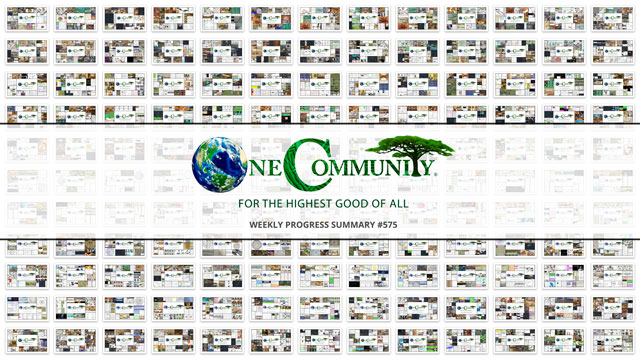
OUR MAIN OPEN SOURCE HUBS
Click on each icon to be taken to the corresponding Highest Good hub page.
One Community’s physical location will forward this movement for creating the global eco-renaissance as the first of many self-replicating teacher/demonstration communities, villages, and cities to be built around the world. This is the March 25th, 2024 edition (#575) of our weekly progress update detailing our team’s development and accomplishments:
Creating the Global Eco-renaissance
One Community Progress Update #575
DONATE | COLLABORATE | HELP WITH LARGE-SCALE FUNDING
CLICK HERE IF YOU’D LIKE TO RECEIVE AN EMAIL EACH WEEK WHEN WE RELEASE A NEW UPDATE
YOU CAN ALSO JOIN US THROUGH SOCIAL MEDIA
ONE COMMUNITY WEEKLY UPDATE DETAILS
HIGHEST GOOD HOUSING PROGRESS
 One Community is creating the global eco-renaissance through Highest Good housing that is artistic and beautiful, more affordable, more space efficient, lasts longer, DIY buildable, and constructed with healthy and sustainable materials:
One Community is creating the global eco-renaissance through Highest Good housing that is artistic and beautiful, more affordable, more space efficient, lasts longer, DIY buildable, and constructed with healthy and sustainable materials:
-
-
- Learn about creating the global eco-renaissance with Our Upcoming Crowdfunding Campaign
- Learn about creating the global eco-renaissance with the different village models: 7 Sustainable Village Models
- Visit the open source portals for the first two: Earthbag Village OS Hub | Straw Bale Village OS Hub
-
This week, Mithil Upadhyay (Mechanical Engineer) utilized CAD designs and accessed Solidworks to assess the advancement of the Vermiculture Toilet design project. He worked on determining the dimensions based on the CAD designs for the ideas submitted in the previous week. Mithil also focused on learning newly added points in the design intent from the vermiculture collaboration document. Safe and sustainable human waste processing systems are an important part of creating the global eco-renaissance with One Community’s open source plans. See below for some of the pictures.
DUPLICABLE CITY CENTER PROGRESS
 One Community is creating the global eco-renaissance through a Duplicable and Sustainable City Center that is LEED Platinum certified/Sustainable, can feed 200 people at a time, provide laundry for over 300 people, is beautiful, spacious, and saves resources, money, and space:
One Community is creating the global eco-renaissance through a Duplicable and Sustainable City Center that is LEED Platinum certified/Sustainable, can feed 200 people at a time, provide laundry for over 300 people, is beautiful, spacious, and saves resources, money, and space:
-
-
- Learn about this building and its teacher/demonstration hub function for creating the global eco-renaissance: Duplicable City Center Open Source Hub
-
This week, Julio Marín Bustillos (Mechanical Engineer) completed another week working on the hub connector. He created a different assembly comprising two stacked diamonds of the first four rows, aiming to design the windows for inclusion within the dome, with the interior design team responsible for this task. Julio also attempted to run the simulation on ANSYS, but the program froze when generating the meshes. The Duplicable City Center is an important part of creating the global eco-renaissance with One Community’s open source plans. See the pictures below for examples related to this work.
Nika Gavran (Industrial Designer) started her collaboration with One Community, completing her orientation and initiating her review of the progress of the Duplicable City Center along with its design and functionalities. She started by researching into the task specifics concerning the 1st and 2nd floor dormer windows, looking into the progress made by previous volunteers on this task. Then Nika imported the latest CAD files and began acquainting herself with the construction of dormer windows. The Duplicable City Center is an important part of creating the global eco-renaissance with One Community’s open source plans. The collage below shows her work for the week.
HIGHEST GOOD FOOD PROGRESS
 One Community is creating the global eco-renaissance through Highest Good food that is more diverse, more nutritious, locally grown and sustainable, and part of our open source botanical garden model to support and share bio-diversity:
One Community is creating the global eco-renaissance through Highest Good food that is more diverse, more nutritious, locally grown and sustainable, and part of our open source botanical garden model to support and share bio-diversity:
-
-
- Learn about the food structures we’re open sourcing for creating the global eco-renaissance: Hoop House Hub | Aquapini & Walipini Open Source Hub
- See what we’ll be growing for creating the global eco-renaissance: Gardens & Hoop Houses | Large-scale Structures | Food Forest | TA
-
This week, a core team member made further progress on the Highest Good Food Tools. They continued researching and compiling a list of necessary tools, including both hand tools and power equipment on the food growing aspect of the project. Additionally, they collaborated with Hayley on a call to discuss the integration of food growing initiatives within public schools. The conversation focused on potential methods for aligning these programs with the educational curriculum and fostering connections with local communities. Highest Good food is an important part of creating the global eco-renaissance with One Community’s open source plans. See their work in the collage below.
Charles Gooley (Web Designer) continued to work on the Vegan Rice Recipes page, developing a range of recipes including Vegan Waffles, Red Pepper Linguine, Crispy Smashed Potatoes, Chicken Thighs with Tomatoes, Easy Tofu Scramble with Pan Fried Potatoes, Jerk Sweet Potato & Black Bean Curry, Picadillo and Brown Rice, Whipped Porridge, Brown Rice with Sardine Stew, Potatoes and White Bean Chili, Sausage Casserole, Potato Salad with Crushed Tofu, Sweet Potato and Lentil Curry, Breakfast Scones with Egg Omelets, Stir Fried Rice with Mixed Veggies and Tofu, and Honey Roasted Chicken with Baked Sweet Potatoes. Placeholder images were utilized, awaiting replacement with final images upon availability. Highest Good Food is an important part of creating the global eco-renaissance with One Community’s open source plans. See his work in the collage below.
Hayley Rosario (Sustainability Research Assistant) completed the summary of the school and small organization plan, incorporating examples, links, and videos to provide comprehensive explanations. Additionally, she integrated the Highest Good Food list, including images and descriptions, into the Highest Good Food document for further review, instruction, and updates. Highest Good Food is an important part of creating the global eco-renaissance with One Community’s open source plans. See below for pictures related to her work.
HIGHEST GOOD EDUCATION PROGRESS
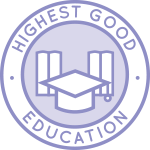 One Community is creating the global eco-renaissance through Highest Good education that is for all ages, applicable in any environment, adaptable to individual needs, far exceeds traditional education standards, and more fun for both the teachers and the students. This component of One Community is about 95% complete with only the Open Source School Licensing and Ultimate Classroom construction and assembly details remaining to be finished. We’ll report on the final two elements to be finished as we develop them.
One Community is creating the global eco-renaissance through Highest Good education that is for all ages, applicable in any environment, adaptable to individual needs, far exceeds traditional education standards, and more fun for both the teachers and the students. This component of One Community is about 95% complete with only the Open Source School Licensing and Ultimate Classroom construction and assembly details remaining to be finished. We’ll report on the final two elements to be finished as we develop them.
With over 8 years of work invested in the process, the sections below are all complete until we move onto the property and continue the development and open sourcing process with teachers and students – a development process that is built directly into the structure of the education program and everything else we’re creating too:
- Creating the global eco-renaissance with education, program overview: Education Open Source Hub
- How the components work together for creating the global eco-renaissance: How to use the Education for Life Program
- Lesson Plans for Life – Lesson Plans How-to
- Foundations of Outstanding Leaders, Teachers, and Communicators
- Curriculum for Life
- Teaching Strategies for Life
- Learning Tools and Toys for Life
- Evaluation and Evolution

Highest Good Education: All Subjects | All Learning Levels | Any Age – Click image for the open source hub
HIGHEST GOOD SOCIETY PROGRESS
 One Community is creating the global eco-renaissance through a Highest Good society approach to living that is founded on fulfilled living, the study of meeting human needs, Community, and making a difference in the world:
One Community is creating the global eco-renaissance through a Highest Good society approach to living that is founded on fulfilled living, the study of meeting human needs, Community, and making a difference in the world:
-
-
- Read how Highest Good society contributes to creating the global eco-renaissance: Highest Good Society
- Learn about the model for fulfilled living and sharing as part of creating the global eco-renaissance: A Day in the Life
- Learn about the 4 economic models for creating the global eco-renaissance: RBE | For-profit | Non-profit | Entrepreneurship
- Learn about our open source community collaboration and management software for creating the global eco-renaissance: The Highest Good Network
-
This week, the core team completed around 65 hours managing One Community volunteer-work review not included above, emails, social media accounts, web development, new bug identification and bug-fix integration for the Highest Good Network software and interviewing and getting set up new volunteer team members. We also shot and incorporated the video above that talks about creating the global eco-renaissance and how creating the global eco-renaissance is an important part of the bigger picture of everything One Community is doing. The pictures below show some of this work.
Aaron Wang (Fundraising Assistant) continued helping to research possible funding sources for One Community. He did extensive research to establish connections with Leonardo DiCaprio, focusing on locating emails and LinkedIn profiles of individuals who may have insights into DiCaprio and the narratives behind their funding. This initiative is part of a broader strategy aimed at facilitating connections with funders by establishing relationships with relevant individuals involved in those donations. Establishing win-win relationships like this are a big part of One Community’s model for creating the global eco-renaissance. See below to check his progress for the week.
Arun Chandar Ganesan (Volunteer Data Analyst And SEO And Social Media Assistant) focused on optimizing the first three web pages for SEO and awaited feedback. Simultaneously, he completed the social media takeover. Following this, Arun optimized the remaining pages for SEO and updated the scores accordingly in the designated sheet. Search engine optimization and an ongoing outreach program are important parts of One Community’s model for creating the global eco-renaissance. The pictures below show some of this work.
Cody Media Productions (Video Editing Company) worked on finalizing the intro video for the weekly progress update YouTube videos by incorporating titles and transitions. Their team reviewed the feedback video and made appropriate adjustments, including rearranging images and adding additional ones. These videos will showcase the open source components of One Community as the prototype for creating the global eco-renaissance. You can view this work in the collage below.
ADMINISTRATION TEAM
The Administration Team’s summary, covering their work administrating and managing most of One Community’s ongoing process for creating the global eco-renaissance was managed by Vriddhi Misra (Admin and Marketing Assistant) and includes Alyx Parr (Senior Support Specialist), Camilla Okello (Administrative Assistant), Charuvi Saxena (HR Specialist), Jiaxin Zheng (Data Analyst), Meenakshi Velayutham (Sustainability Associate), Olawunmi “Ola” Ijisesan (Administrative and Management Support), Ram Shrivatsav (Data Analyst and Admin assistant), Ratna Meena Shivakumar (Data Analyst and Admin), Ruiqi Liu (Administrative Assistant), Sai Divya Gudimella (Data Analytics Administrative Assistant), Sneka Vetriappan (Data Analyst), T R Samarth Urs (Data Analyst), Vibhav Chimatapu (Data Analyst/Admin Assistant) and Xiaolai Li (Administrative Assistant). This week Alyx reviewed the work of other Admins and converted videos into audio for the Podcast. Camilla managed administrative duties, reviewed peers’ work, and optimized assigned blogs. Charuvi learned administrative tasks, demonstrated processes through practice sessions, and compiled summaries of volunteers’ activities. Gokul focused on enhancing the website’s search engine optimization (SEO), increasing the SEO score, and rectifying errors within the SEO framework. Jiaxin completed PR reviews, updated team summaries and collages on the webpage, and incorporated feedback into blog content. Meenakshi performed admin tasks, including reviewing weekly blog pages, updating tracking sheets, and making bio announcements. Ram concentrated on mastering SEO techniques, optimizing blog posts, and beginning the initial steps in HGN front-end product testing. Ratna focused on improving the SEO score of multiple blogs through various optimizations. Ruiqi completed review processes for multiple teams, created collage images, generated SEO keywords, and provided assistance to new admins. Sai Divya participated in admin team training, collaborated on the hiring process, and worked on search engine optimization tasks. Sneka contributed to software development projects and administrative tasks, including reviewing feedback and editing SEO pages. Samarth managed the PR review team, applied SEO techniques to optimize blog posts, and received constructive feedback. Vriddhi optimized assigned peers’ blogs, reviewed SEO work, revised tracking spreadsheets, compiled summaries, proofread, and edited blog posts. Xiaolai completed weekly reports, reviewed training processes, and organized documents and summaries. One Community’s model for creating the global eco-renaissance includes developing and maintaining a huge administration team like this. You can see the work for the team in the image below.
GRAPHIC DESIGN TEAM
The Graphic Design Team’s summary was managed by Ruiqi Liu (Administrative Assistant) and included Ashlesha Navale (Graphic Designer), Tharanga Pathirana (Graphic Designer) and Nancy Mónchez (Graphic Designer). Ashlesha created a Volunteer Announcement and made bio and announcement images while updating web content for the announcement. Additionally, she created six Social Media Images and researched nature-based and theme-based images to enrich the platform’s visual content. Nancy focused on enhancing social media posts, experimenting with stylistic variations to maintain consistency while introducing diverse elements such as individuals, natural backgrounds, animals, and illustrations. Tharanga reviewed and refined a detailed Google document outlining the volunteer setup process, leveraging AI prompts for image generation, and collaborating with team members to ensure clarity and effectiveness across various web pages and links. See the Highest Good Society pages for more on how this relates to creating the global eco-renaissance. The collage below shows some of this work.
HIGHEST GOOD NETWORK PROGRESS
 One Community is creating the global eco-renaissance through open source Highest Good Network® software that is a web-based application for collaboration, time tracking, and objective data collection. The purpose of the Highest Good Network is to provide software for internal operations and external cooperation. It is being designed for global use in support of the different countries and communities replicating the One Community sustainable village models and related components.
One Community is creating the global eco-renaissance through open source Highest Good Network® software that is a web-based application for collaboration, time tracking, and objective data collection. The purpose of the Highest Good Network is to provide software for internal operations and external cooperation. It is being designed for global use in support of the different countries and communities replicating the One Community sustainable village models and related components.
This week, a core team member worked on Highest Good Network PRs testing, confirming the fixes for several PRs, including improving the Profile Page Teams Tab UX (PR #1927), resolving the issue with the “thank you” message not displaying when selecting the home country option on the profile initial setup page (PR #2056), and moving the “eye” icon on the Reset Password modal (PR #2066). However, several PRs remained unresolved, such as update of the tangible time process, default visible/invisible setting for the Mentor role, and the inability to prevent editing of Jae’s accounts despite PR #2026. Additionally, the Blue Square Scheduler still allows requests for time off for a week that has already passed (PR #1994). In addition to PR testing, a Volunteer account to test Tangible time updates and recorded a video for the Tangible time update task has been set up. The Highest Good Network software is how we’ll be managing and objectively measuring our process for creating the global eco-renaissance through our social architecture, construction, production, and maintenance processes. See below for pictures related to their work.
ALPHA SOFTWARE DEVELOPMENT TEAM
The Alpha Team’s summary, covering their work on the Highest Good Network software was managed by Sucheta Mukherjee (Software Developer) and includes Navya M (Full Stack Developer), and Shamim Rahman (Software Engineer). The Highest Good Network software is how we’ll be managing and objectively measuring our process for creating the global eco-renaissance through our social architecture, construction, production, and maintenance processes. This week, Navya encountered a version downgrade issue while working on a task, and sought assistance in the Slack channel. She then implemented some functionality for the task, proceeded with coding, completed implementation, and initiated testing. Additionally, Navya contributed their part to creating the global eco-renaissance as they reviewed pull requests #803, #804, and #805, and joined the testing team, participating in a Zoom meeting to gain insights into testing procedures and discuss related matters. Shamim reviewed seven different pull requests (PRs) numbered PR#2075, PR#2073, PR#2065, PR#1798, PR#1931, PR#2074, and PR#1862. He also handled functionality tests and provided feedback by commenting on the PRs with both screenshots and videos. PR#1862, PR#1798, and PR#2075 were found to not work as intended, so he shared the results. See the Highest Good Society and Highest Good Network pages for more on how this relates to creating the global eco-renaissance. View some of the team’s work in the collage below.
BADGES BUGS SOFTWARE DEVELOPMENT TEAM
This week, the Badges Bugs Team’s summary overseeing advancements in the Highest Good Network software, was managed by Shaofeng Li (Software Engineer). The team comprised Renan Luiz Santiago Martins César (Full-stack developer), Summit Kaushal (Backend Software Developer), Xiao Zhang (Software Engineer), and Xiaohan Meng (Software Engineer). The Highest Good Network software is how we’ll be managing and objectively measuring our process for creating the global eco-renaissance through our social architecture, construction, production, and maintenance processes. This week, Xiao made efforts to enhance their project by establishing a specific function aimed at efficiently allocating X hours across a single week. He improved code structure and readability by segregating the initial XHoursForXWeeks function into two separate components, making the code more concise and easier to navigate, which refined the process for time allocation in their software endeavors. Shaofeng worked on the HGN Software Development project, working on activities ranging from integration testing of new features to debugging and team meetings, aimed at enhancing software functionality and team efficiency. He also focused on optimizing workflow by merging tasks, aiding new team members, and investigating database discrepancies to unify development and production environments. Xiaohan contributed their part to creating the global eco-renaissance as they concentrated on testing the ‘Assign Badge’ permission feature, deploying applications, and discussing outcomes with her manager, leading to the preparation and testing of the feature’s Pull Request. Summit reviewed and debugged code for Part B, discarded an unworkable function, and formulated a plan for a new approach while also reviewing badge code and studying software management principles. Renan Luiz tested the backend using nodemon for badge implementation, addressing issues such as date inconsistencies in MongoDB and debugging the CheckXHrsForWeek function based on documentation to rectify functionality in the local HGN environment. Collectively, their work contributed to their projects through technical troubleshooting, code enhancement, team collaboration, and strategic planning. See the Highest Good Society and Highest Good Network pages for more on how this relates to creating the global eco-renaissance. View some of the team’s work in the collage below.
BLUE STEEL SOFTWARE DEVELOPMENT TEAM
This Blue Steel Team’s summary, covering their work on the Highest Good Network software was managed by Nathan Hoffman (Software Engineer, Team Manager) and includes Alex Brandt (Full Stack Developer), Bhuvan Dama (Full stack Developer), Jingyi Jia (Software Engineer), Shiqing Pan (Full-Stack Software Developer), Swathy Jayaseelan (Software Engineer), Tzu Ning “Leo” Chueh (Software Engineer) and Yaohong Xiang (Software Engineer). This week, Nathan examined Jay’s permissions PRs, uncovering peculiar logic and consulting Xiao for clarification, while also investigating MongoDB atomic updates for time entry adjustments and offering support on Slack. Jingyi created a frontend solution to bolster the badge management system, enhancing the togglePermission function within the PermissionListItem component to automatically grant “seeBadges” permission alongside badge management permissions, submitting pull request #2085 for review. Alex finalized the ChatGPT integration feature, submitting initial pull requests for both frontend and backend components, addressing requested changes on the backend and reviewing frontend pull request #2075. Bhuvan contributed their part to creating the global eco-renaissance as they focused on enhancing test coverage for the Notes section, achieving 73.91% coverage for ToogleSwitch.jsx and complete coverage for TriStateToggleSwitch while encountering difficulties with TableFilter.js. Shiqing handled formatting issues on the weekly summaries submission page and managed PR reviews for multiple submissions, including offering feedback and solutions for bug rectification. Yaohong advanced the “Quick Setup Modal” feature, resolving rendering issues from PR 1673 but facing challenges with data storage mechanisms. Swathy finalized PR-2035 for submission, reviewed PR 804, and tackled unit test issues with the Projects component. Meanwhile, Tzu Ning refined the teamCodeChange method, optimizing the tracking and updating of team code counts while implementing logic to manage state variables. See the image below to view some of their work.
CODECRAFTERS SOFTWARE DEVELOPMENT TEAM
The Code Crafters Team’s summary, covering their work on the Highest Good Network software, was managed by Anirudh Ghildiyal (Software Engineer) and includes Anirudh Dutt (Software Developer), Ramya Ramasamy (Software Engineer), Nahiyan Ahmed (Full Stack Software Developer), Shantanu Kumar (Software Developer), Shengjie Mao (Software Engineer), Sophie Lei (Software Engineer), Weiyao Li (Software Engineer) and Tapan Pathak (Software Engineer). The Highest Good Network software is how we’ll be managing and objectively measuring our process for creating the global eco-renaissance throughout our social architecture, construction, production, and maintenance processes. Anirudh D created a permissions constants file in the utils of the front end to avoid hardcoding the permissions. He addressed an issue with the branch, realizing it was related to the development branch, fixed his issues, pushed his branch, and raised a PR. He also joined the unit testing team with Diego and learned more about unit testing. And Anirudh G reviewed the feedback on the raised PR and proceeded to make necessary changes and commit updates. He also reviewed tasks sent for review by teammates Anirudh D, Nahiyan, and Weiyo, finding the work satisfactory. Additionally, he completed writing most of the unit test cases, with two failing and requiring attention, intending to resolve them and raise a PR for review. He led the weekly standup and had follow-ups with teammates regarding their work for the week, making final changes and updates to the code. Lastly, Anirudh G reviewed teammates’ summaries, pictures, and weekly videos, finding everything satisfactory. Nahiyan addressed several issues in his development tasks, focusing on enhancing the user experience by fixing the Basic Information tab on the User Profile page and investigating and resolving a critical bug causing crashes in the time log and dashboard pages when a user is deleted from a project with assigned tasks. Shantanu carried out pull request reviews and spent time debugging issues in the repository, providing feedback, and contributing to code improvements. Shengjie contributed their part to creating the global eco-renaissance as they focused on developing unit tests for the TagSent component in the WBS and engaged in discussions with fellow developers regarding challenges encountered while writing unit tests for the BMLogin component. Sophie improved the tasks and contributed a section of report #2005 for Yixiao, making the table mobile-friendly and adjusting the header component to only appear on desktop devices. Tapan addressed the task of fixing the Pagination UI in the Members table and resolving memory leaks observed on the user profile page. Weiyao began his first week with the Development team, primarily engaging in the study of React/Redux. He also familiarized himself with an assigned feature related to creating new users, reviewed React/Redux concepts through a practical demo project and got familiar with the existing codebase pertinent to the feature. See the Highest Good Society and Highest Good Network pages for more on how this relates to creating the global eco-renaissance. The collage below shows some of this work.
EXPRESSERS SOFTWARE DEVELOPMENT TEAM
The Expressers Team’s summary, covering their work on the Highest Good Network software, was managed by Demi Zayas (Full Stack Software Engineer) and includes Christy Guo (Software Engineer), Ilya Flaks (Software Engineer), Shereen Punnassery (Full Stack Software Engineer), Tareq Mia (Software Engineer), and Mohammad Abbas (Software Engineer). The Highest Good Network software is how we’ll be managing our process of creating the global eco-renaissance throughout our social architecture, construction, production, and maintenance processes. Christy implemented a 3D bar chart into the project’s reporting page and provided support to the unit testing team, aiding in the addition of missing unit tests to the backend. Demi focused on reviewing documentation, expanding her understanding of unit testing, and advancing ongoing tasks related to the Tools List and Login rerouting function. She also compiled the team summary and reviewed her team’s work. Ilya continued his work on Phase II’s “4.5.4 Add routing, controllers for Log Tool request” task, enhancing backend functionality to handle multiple tool items and testing “check out” and “check-in” features on the front end. He refined previous work based on feedback received for PR#2010, integrating additional validation measures into the “edit consumables” form. Mohammad completed 8 PR reviews, unit and feature testing, and ensured codebase integrity across various frontend and backend functionalities. Shereen focused on unit testing the WeeklySummaryModal component and addressed Redux mock store issues to enable correct thunk middleware configuration for store dispatching. Tareq continued refining the aesthetics and functionality of the Team Locations map component, addressing styling issues, implementing sticky headers, ensuring responsiveness across screen sizes, and integrating sorting functionality into table columns. See the Highest Good Society and Highest Good Network pages for more on how this relates to creating the global eco-renaissance. The collage below shows some of this work.
GIT-R-DONE SOFTWARE DEVELOPMENT TEAM
The Git-R-Done Team’s summary, covering their work on the Highest Good Network software, was managed by Sai Deepak Dogiparthi (Software Developer) and includes Chris Chen (Software Engineer Intern), Miguelcloid Reniva (Software Developer), Nidhi Galgali (Software Developer), Rhea Wu (Software Engineer), and Shuhua Liu (Full-Stack Developer). The Highest Good Network software is how we’ll be managing our process of creating the global eco-renaissance throughout our social architecture, construction, production, and maintenance processes. Chris developed and integrated both backend and frontend functionalities for an equipment detail page in a building management dashboard. Leveraging Mongoose with Node.js on the backend, he implemented a controller function to fetch tool information by ID, facilitating seamless data flow and improving user interaction. On the frontend, utilizing React and Redux, Chris designed the EquipmentDetail component to dynamically display fetched data, such as project name and current usage, while ensuring smooth navigation and user interaction. Miguel collaborated with Ilya to optimize the backend component of the Tools Log form, ensuring optimal properties and addressing animation and alignment issues for enhanced user experience. Nidhi worked on MongoDB querying for the BMdashboard, laying the groundwork for backend development and schema drafting for the Equipment detail page. Rhea focused on advancing pull requests, enhancing her skills through tutorials and articles. Deepak concentrated on completing the equipment details page and discussed additional fields and database connectivity during team meetings. Shuhua streamlined communication between frontend and backend systems, integrating Manager Icons into the tasks tab and developing new components to display manager information effectively. See the Highest Good Society and Highest Good Network pages for more on how this relates to creating the global eco-renaissance. The collage below shows some of this work.
MOONFALL’S SOFTWARE DEVELOPMENT TEAM
Moonfall Team’s summary, covering their work on the Highest Good Network software, was managed by Navneeth Krishna (Software Engineer) and includes Abdelmounaim “Abdel” Lallouache (Software Developer), Cheng-Yun Chuang (Software Engineer), Haoji Bian (Software Engineer), Jiadong Zhang (Software Engineer), Lu Wang (Software Engineer) and Malav Patel (Software developer). The Highest Good Network software is how we’ll be managing and objectively measuring our process for creating the global eco-renaissance throughout our social architecture, construction, production, and maintenance processes. Abdelmounaim updated the format and style of the blue square notification email, making PR #801 for this update. Additionally, he addressed the issue of the invalid date in the blue square description and submitted PR #2080 for these fixes. Furthermore, he improved the functionality of the time off indicator on the leaderboard, ensuring its visibility whenever a user has scheduled time off. Cheng-Yun focused on implementing a function to delete a member in the task and project if the member has been removed from the user profile. Haoji’s focus was on improving the loading time of the user management page within the application. Previously, the page required 26 seconds to fully load, which was identified as a performance bottleneck. After optimization efforts, the loading time has been reduced to less than 4 seconds, reflecting an 80% reduction. Jiadong focused on enhancing the dashboard by updating the badge display and improving the timelog section of the frontend. His work involved refactoring the tab contents to ensure they are more readable and easier to maintain, enhancing overall code quality and user experience. Lu focused on debugging test functions for critical components, including the AddTaskModal, EditTaskModal, and ImportModal files. She checked and used different ways for debugging, including checking Redux Action Dispatch to verify that the updateTask action creator in the EditTaskModal component is correctly defined and dispatched as a plain object. Malav developed DELETE_TIME_ENTRY_OWN feature and posted a Malav_Delete_Time_Entry_Own PR (#2087) with detailed documentation. Navneeth addressed a critical review on one of his pull requests, focusing on code cleanup and adding necessary functionality to enhance user experience. He responded to reviewer feedback and ensured that the PR was marked as a high-priority item for re-review. Additionally, Navneeth played a pivotal role in the ongoing development of the “Permissions Management: View and Interact with Task “✓ ”” feature, addressing implementation bugs and preparing the pull request for review with a “High Priority – Please Review First” tag. See the Highest Good Society and Highest Good Network pages for more on how this relates to creating the global eco-renaissance. Look below for a collage of their work.
REACTONAUTS’ SOFTWARE DEVELOPMENT TEAM
Reactonauts’ Team’s summary, covering their work on the Highest Good Network software, was managed by Masasa Thapelo (Software Engineer) and includes Abi Liu (Software Engineer), Changhao Li (Software Engineer), Dhairya Mehta (Software Engineer), Peterson Rodrigues (Full-Stack MERN Stack Developer), Shengwei Peng (Software Engineer), Shiwani Rajagopalan (Software Engineer), Vikram Badhan (Software Engineer), Yi Feng (Full-Stack Software Engineer) and Yixiao Jiang (Software Engineer). The Highest Good Network software is how we’ll be managing and objectively measuring our process for creating the global eco-renaissance throughout our social architecture, construction, production, and maintenance processes. Abi reviewed Pull Requests, assessing functionality and code cleanliness across 21 pull requests. Changhao developed unit tests for the TimeEntryForm, set up a folder for weekly team pictures, and reported progress to the team manager. Dhairya focused on 10 Pull Requests, testing and verifying the test cases as per the requirements of each pull request. Masasa managed the summary and hosted the weekly meeting, then continued work on permission functionality for enabling access to different capabilities in the user management page. Peterson finalized team filters for administrators, core team members, and owners, creating a pull request for review. Shengwei completed code implementation, created PRs, and provided a demo video for a task. Shiwani created 7 test cases for the WBSTasks unit test, focusing on aspects like WBS name display, link integrity, button functionality, permission display, and button behavior. Vikram focused on unit testing for WeeklySummaryOptions.jsx and ToggleSwitchContainer.jsx files, alongside completing pull request reviews. Yi worked on backend APIs for a high-priority task, submitted one PR, and developed crucial APIs for visualization. Yixiao completed remaining test cases for the header file, creating a branch for the Weekly Summary file unit test. See the Highest Good Society and Highest Good Network pages for more on how this relates to creating the global eco-renaissance. Look below for pictures of this work.
SKYE’S SOFTWARE DEVELOPMENT TEAM
Skye’s summary, covering their work on the Highest Good Network software, was managed by Luis Arevalo (Front End Developer) and includes John Mumbi (Developer), Sameer (Full stack developer) and Yao Wang (Software Engineer). The Highest Good Network software is how we’ll be managing and objectively measuring our process for creating the global eco-renaissance throughout our social architecture, construction, production, and maintenance processes. John addressed feedback on the pagination component, engaging in collaborative discussions with reviewers to understand necessary adjustments and incorporating corrections, and implemented requested changes. Luis finalized his work on adding a warning description, completing the function, and initiating testing to identify any potential bugs. He generated a PR for the feature and concentrated on reviewing his PR and addressing comments, providing feedback to users on their issues and ensuring proper functionality. Sameer spent his second week working on reviewing PR, going through previous reviews and code base to analyze coding structure. Yao completed final testing on multiple pull requests, including PRs 2065, 2047, 2074, 2075, 2030, 2031, 2032, 2034, 2067, 2022, 1960, and 1941. Among these PRs, a mix of front-end and back-end aspects were involved, although the majority leaned towards front-end orientation. See the Highest Good Society and Highest Good Network pages for more on how this relates to creating the global eco-renaissance. See the collage below for some of their work.
SOFTWARE PR REVIEW TEAM A-L
The PR Review Team’s summaries for team members names starting with A-L and covering their work on the Highest Good Network software was managed by Olawunmi “Ola” Ijisesan (Administrative and Management Support) and Jiaxin Zheng (Data Analyst). The Highest Good Network software is a foundation of what we’ll be using to measure our results of creating the global eco-renaissance. This week’s active members of this team were: Aaron Persaud (Software Developer), Anand Seshadri (Software Engineer), Gayathridevi Chithambaram (Full Stack Developer), Harsh Bodgal (Software Engineer), Hetvi Patel (Full Stack Developer), Hoang Pham (Software Developer), Imran Issa (Software Developer), Iven Chih Ken Yao (Software Developer), Jaiwin Thumber (Front-End Develolper), KaiKane Lacno (Software Developer and Team Manager), Kurtis Ivey (Software Engineer), Lin Khant Htel (Frontend Software Developer). They reviewed all the Highest Good Network PRs (Pull Requests) shared in this week’s update. Learn more about how the Highest Good Network will measure and assist in creating the global eco-renaissance in the Highest Good Network open source hub. The collage below shows a compilation of the work from this team.
SOFTWARE PR REVIEW TEAM M-Z
The PR Review Team’s summaries for team members names starting with M-Z and covering their work on the Highest Good Network software was managed by Olawunmi Ijisesan (Administrative and Management Support) and Samarth Urs (Administrative Assistant and Data Analyst). The Highest Good Network software is a foundation of what we’ll be using to measure our results of creating the global eco-renaissance. This week’s active members of this team were: Meet Padhiar (Software Engineer), Mengtian Chen (Software Engineer), Mingqian Chen (Software Engineer), Moe Khalaf (Full Stack Developer), Olga Yudkin (Software Engineer), Priyanka Sharma (Software Engineer), Raj Nada (Software Developer), Sameer Deshpande (Software Engineer), Sanket Kaware (Full stack developer), Sarthak Jaiswal (Full Stack Developer), Tim Kent (Full Stack Software Engineer) and Zijie “Cyril” Yu (Software Engineer). They reviewed all the Highest Good Network PRs (Pull Requests) shared in this week’s update. Learn more about how the Highest Good Network will measure and assist in creating the global eco-renaissance in the Highest Good Network open source hub. The collage below shows a compilation of the work from this team.
AND WE PRODUCED THIS WEEKLY UPDATES BLOG – CLICK HERE TO SUBSCRIBE
FOLLOW ONE COMMUNITY’S PROGRESS (click icons for our pages)
INVESTOR PAGES
GET INVOLVED
DONATE ● WAYS ANYONE CAN HELP ● MEMBERSHIP
CLICK HERE FOR ALL PAST UPDATES
 One Community
One Community



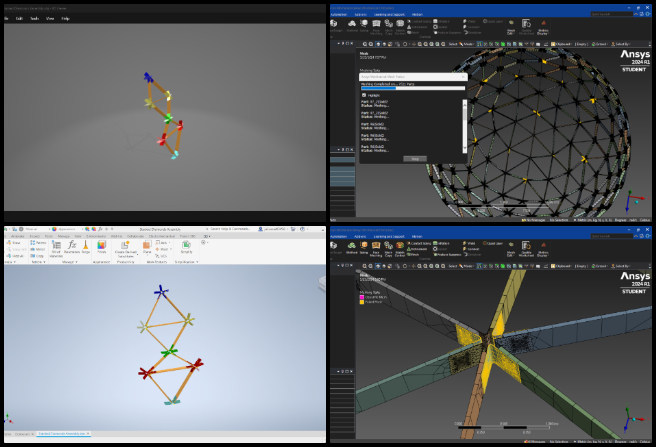



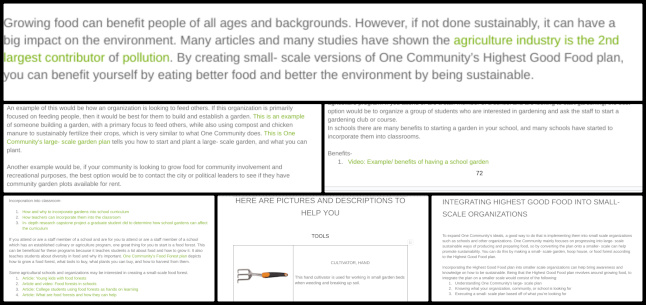

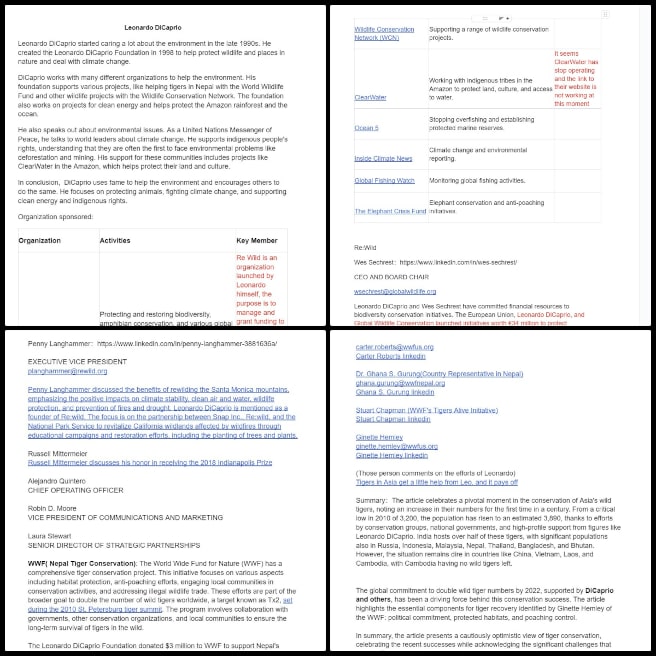
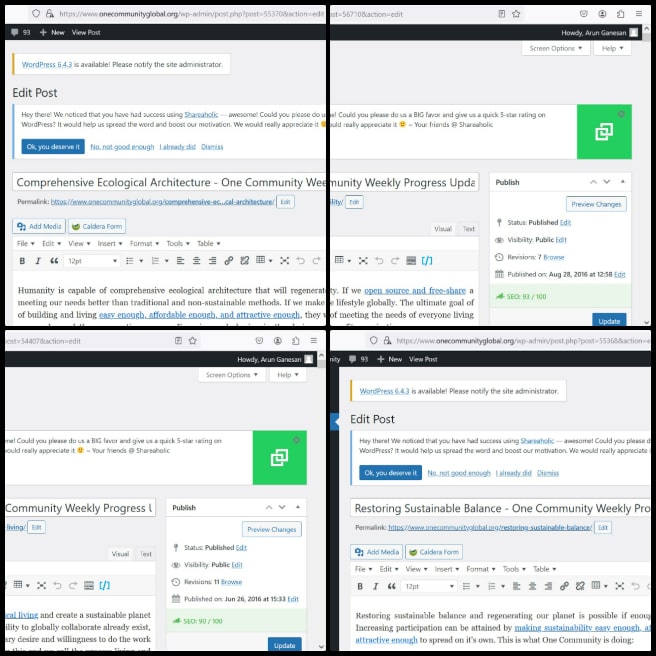
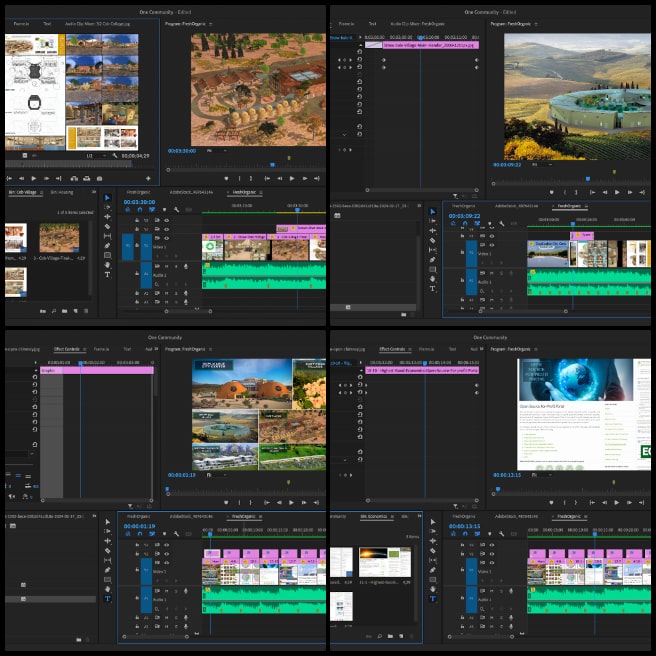


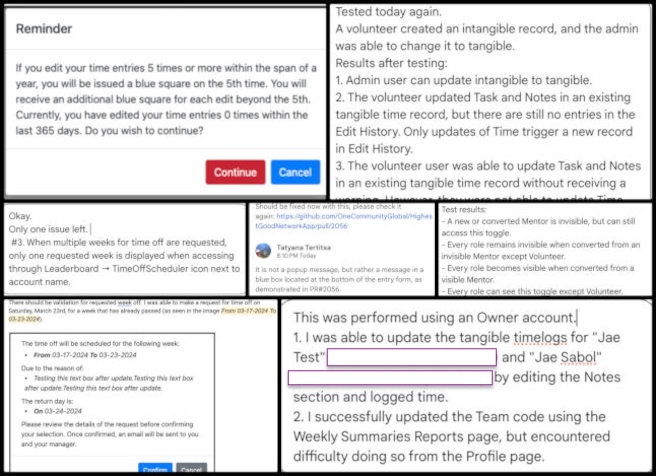

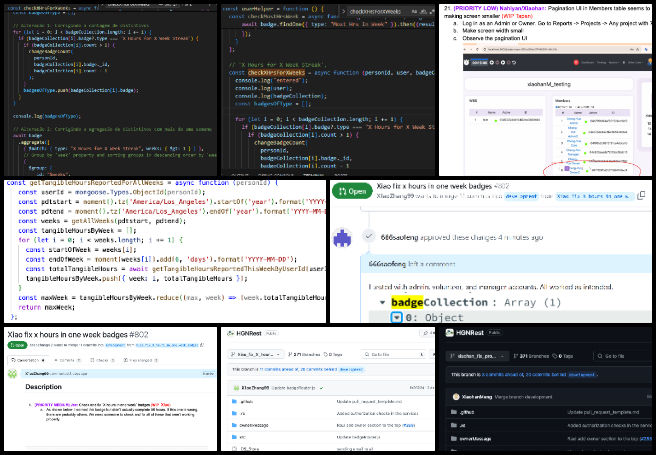








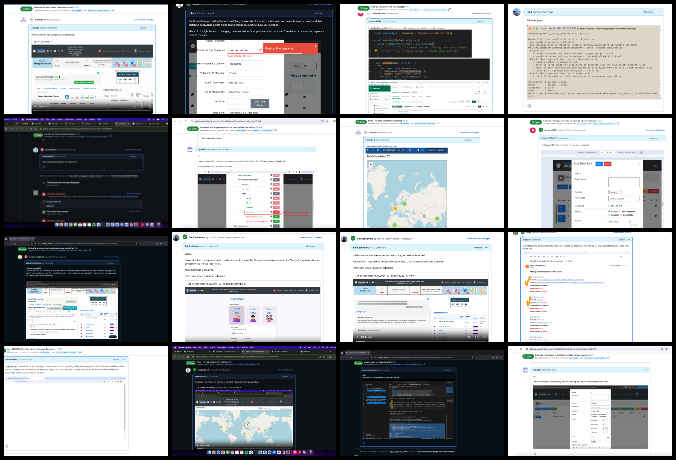
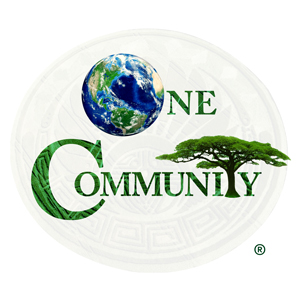


Connect with One Community